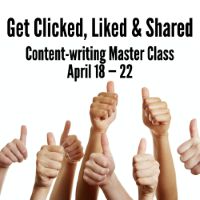6 steps to step-by-step service stories
Service stories aren’t news articles. Which means that the inverted pyramid isn’t the right structure.

Instead, use the feature-style story structure, and organize your piece like this:
1. Illustrate your point in the lead.
Grab attention by showing instead of telling:
2. Summarize your story in the nut graph.
Now that you’ve grabbed reader attention by showing, it’s time to tell folks where you’re taking them.
3. Give context in the background section.
Summarize “Why these tips now?” with research or broader context.
- Journalists and bloggers love tipsheets.
- Social media channels run on ‘Top 10 ways to …’ listicles.
- Customers and clients will read the tipsheet you write today for years to come.
- Tipsheets position your organization as the expert in the field.
4. Develop your story in the body.
Here’s where you list your tips, using an alphabetical, chronological or hierarchical structure.
Here are four ways to make the most of your next tipsheet:
- Find a topic. Explain how to save on taxes, file for Social Security, grow a great lawn, reduce gas consumption or do whatever it is your organization helps people do.
- Organize tips logically. Choose alphabetical, chronological or hierarchical structure.
- Use the language of service stories. How-to language — like top, 10, you, most, best and, of course, how to — has been a mainstay of service journalism for years.
- Put a number in the headline. Numerals sell stories. That’s why coverlines on best-selling magazines are packed with numbers, from “6 Steps to 6-Pack Abs” to “101 Best Cheap Eats.”
5. Restate your point in the wrapup.
Now that I’ve shared this information with you, this penultimate paragraph suggests, we can only agree that …
“News you can use to live your life better” is the currency of most successful content marketing and PR writers.
6. Illustrate your point in the kicker.
Leave a lasting impression with a concrete, creative, provocative final paragraph.
Investor’s Business Daily’s motto is, “Don’t read it. Use it.” Shouldn’t that be your motto too?
How to create content that almost writes itself
Would you like to master a structure that’s been proven in the lab to attract 300% more readers; get more social media shares; and boost readership, understanding, engagement, interest, satisfaction and more?
If so, please join me at Get Clicked, Liked & Shared — our content-writing workshop that starts April 18.
You’ll master a structure that has increased reading by 520%. Learn to write leads that draw readers in. And leave with templates and recipes you can use to organize the best survey story you’ve ever written, create tipsheets that almost write themselves and write great case studies with our annotated examples.
Content creation has never been easier!
Save up to $100 with our group discounts.
